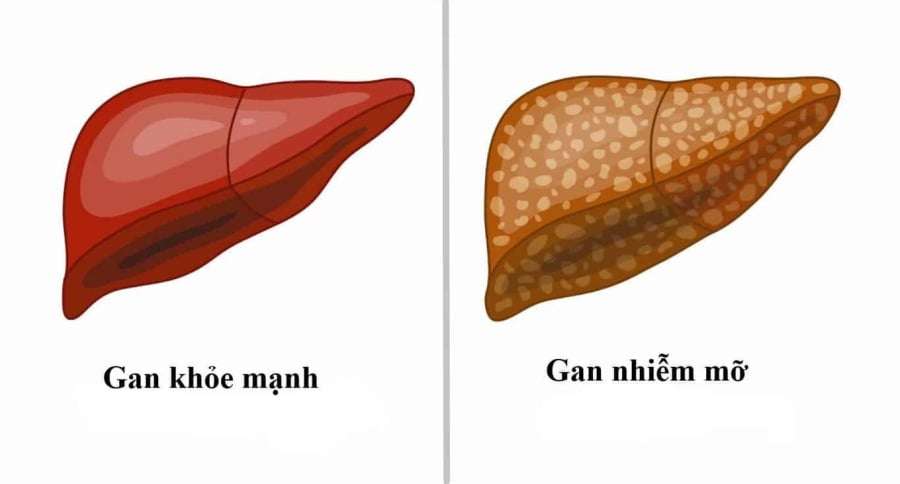## Non-Alcoholic Fatty Liver Disease: A Serious Health Concern
Non-alcoholic fatty liver disease can lead to liver cancer even in the early stages, without progressing to cirrhosis.
Master – Doctor Luu Thi Minh Diep (Digestive Hepatobiliary Center, Bach Mai Hospital) warns: Non-alcoholic fatty liver disease is a pathology with many potential serious complications, including the possibility of developing liver cancer even in the early F1 and F2 stages, without necessarily going through cirrhosis as many people mistakenly believe.
It doesn’t stop there; non-alcoholic fatty liver disease also increases the risk of colorectal cancer by 20 times and is associated with many extrahepatic diseases such as cardiovascular disease, chronic kidney disease, and sleep apnea syndrome…

Non-alcoholic fatty liver disease occurs when the amount of fat accumulated in the liver exceeds 5% of its weight, leading to impaired liver function. This condition is commonly seen in individuals with uncontrolled diets (high in sugar, fat, and alcohol), those who are overweight or obese, and those with a sedentary lifestyle. However, thin individuals can also develop this disease due to metabolic disorders or genetic factors.
Worryingly, the early stages of the disease often go unnoticed as there are rarely any distinct symptoms. As the disease progresses, patients may experience the following signs and symptoms:
– Fatigue, abdominal fullness, nausea
– Itchy skin, hives, or allergies
– A sense of heaviness in the right upper abdomen
– Loss of appetite and unusual weight loss, especially when consuming oily foods
In severe cases, jaundice, nosebleeds, and gum bleeding may occur due to significant liver dysfunction, leading to hepatitis, cirrhosis, or liver cancer.
To accurately assess the extent of non-alcoholic fatty liver disease, patients should undergo blood tests, liver ultrasound, CT scans, and, in suspected cases of complications, a liver biopsy to determine the degree of liver damage.
For those already diagnosed with non-alcoholic fatty liver disease, monitoring the progression through liver elastography is crucial. This non-invasive method helps accurately evaluate liver stiffness and fat accumulation, aiding in more effective treatment.

The severity of non-alcoholic fatty liver disease is categorized based on the percentage of affected liver cells:
S0: 0-10% (normal)
S1: 11-33% (mild fatty liver)
S2: 34-66% (moderate fatty liver)
S3: 67-100% (severe fatty liver)
According to Doctor Luu Thi Minh Diep, non-alcoholic fatty liver disease is preventable and treatable if detected early. To prevent this condition, individuals should maintain a healthy diet rich in green vegetables, fresh fruits, and fiber while limiting sugar, fat, and processed food intake.
Additionally, regular physical activity, such as walking, running, swimming, or yoga for at least 30 minutes daily, helps control weight and reduce body fat. For obese individuals, weight loss positively impacts liver health: a reduction of more than 3% of body weight improves liver steatosis; a 5-7% loss improves liver inflammation, and a loss of over 10% reduces liver fibrosis.
It is also essential to manage underlying conditions like diabetes and hypertension and undergo regular health check-ups to detect and address any liver-related issues promptly.
7 Herbal Allies for Fatty Liver Support: Nature’s Gentle Healers, Used Wisely
Fatty liver is a prevalent condition, and the quest for natural solutions to aid its recovery is ever-present. This introduction sets the stage for an informative article that will unveil seven precious herbs renowned for their ability to support liver function and safely normalize fatty liver conditions.



































